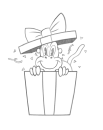Understanding Illusions
Creating depth involves techniques like overlap and atmosphere (things fading into the background), which are straightforward. However, foreshortening, diminution, and convergence to vanishing points require practice.
The Key Skill: Simplifying Forms
To master advanced techniques, focus on reducing complex forms into simple ones you can draw in any position. This skill is essential for drawing from imagination rather than copying.
Copying vs. Understanding
Copying details helps you notice specifics but doesn't enable you to redraw in a new position from memory. Simplify the object and practice repositioning it without direct observation.
Drawing Objects in Any Position
Draw the object as a simplified form, like a box, then draw it again in a different position. This exercise helps you grasp the structure and master the line systems that determine perspective.
The Importance of Line Systems
Understanding a box's three line systems is crucial. Once you position a box, these lines solve all other lines. This concept applies to both objects and settings.
Start with Simple Forms
Before tackling complex forms, practice with simple, blocky ones. Objects with many parts can overwhelm beginners. Begin with shapes like blocks, wedges, cylinders, toruses, and spheres.
Notes on Spheres
While spheres are simple, placing precise ellipses on them is advanced. Accurate ellipses stem from understanding boxes. So, mastering boxes first aids in drawing spheres.
Introducing the Blob Approach
Try the Blob Approach, a method of starting with a shape and adding cross-contour lines to define it. This helps you sculpt a simplified version of your object.
Upcoming Lessons
We'll dive into the science of form: orthos, axes, eye levels, picture planes, and more. Experimenting now primes you for these concepts.
Continue learning about Perspective in the premium course!
- Choose an Object: Select something relatively simple or box-like in form, such as a household item or a geometric shape.
- Initial Drawing: Draw the object in a three-quarter view without focusing on detail. Seek the basic structure as if it were contained within a box.
- Repositioning: Without looking at the object, attempt to draw it again from a different angle. This challenges you to understand and mentally manipulate the whole object.
- Iteration: Repeat this process at least three times, each time choosing a different position. Aim to show it foreshorten in various orientations.
Don't forget to share your work with the community!
This assignment is designed to help you break down complex objects into simpler, manageable forms, which is a crucial skill for mastering practical perspective.
Deadline - submit by January 20, 2025 for a chance to be in the critique video!












